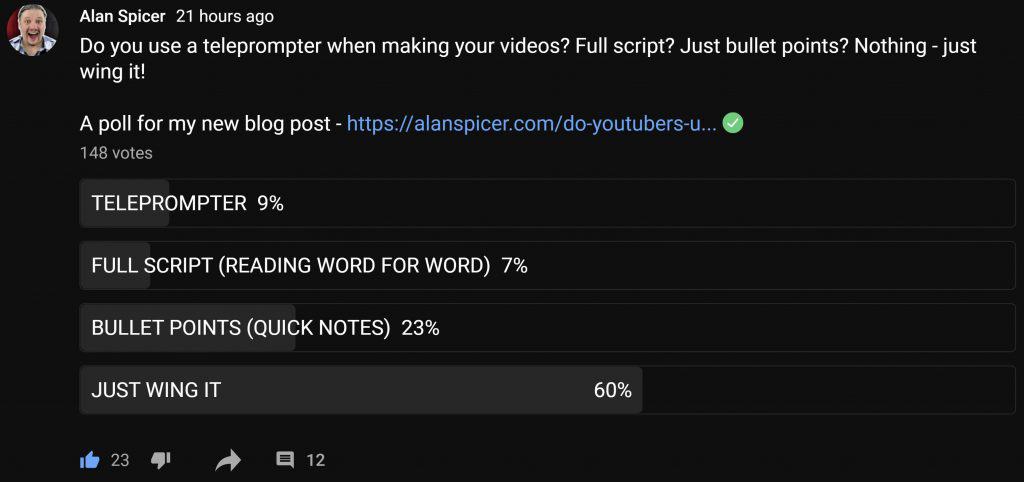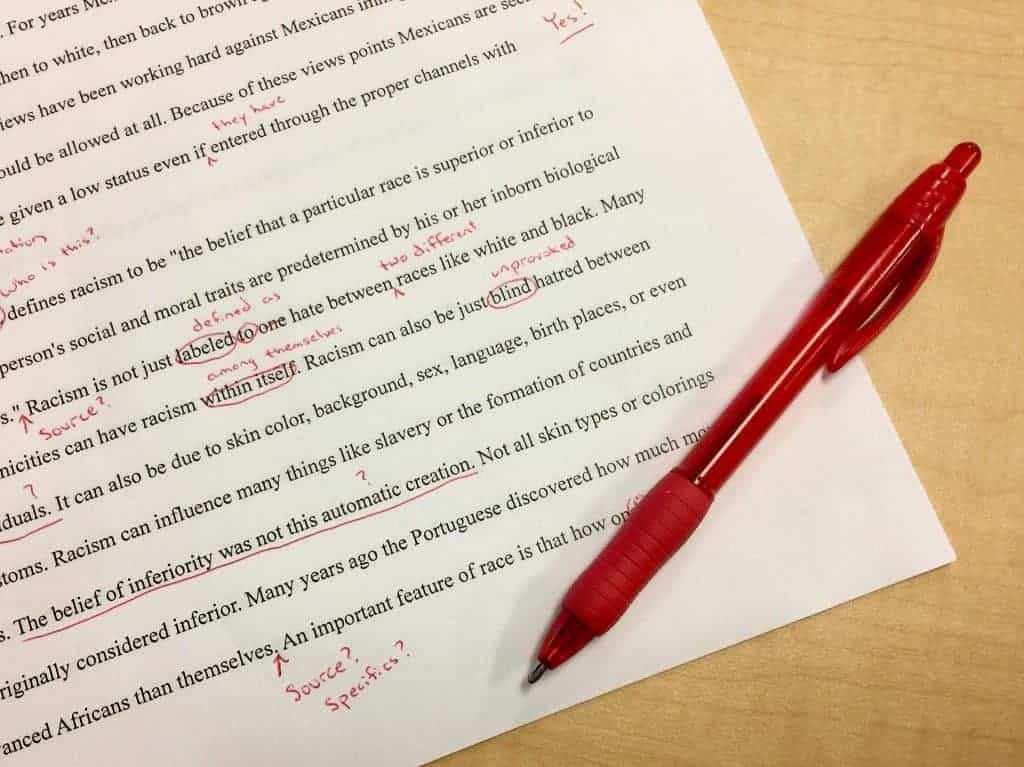There are many YouTubers with what some would call the “gift of gab”, who are able to sit down (or stand up) in front of a camera and chatter away for a solid twenty minutes or longer with little more than a few scribbled notes for prompting. For those lucky few, YouTube can be a magical place. For many of us, much more work is required to make the YouTube dream a reality, and scripts soon become an important part of the process.
Unfortunately, knowing that you need a script for your YouTube videos and knowing how to write a YouTube script are two very different things. Fortunately, you have lovely articles like this one to help you along!
Know Your YouTuber
If you are writing a script for yourself—as many YouTubers do—this part should be relatively simple for you. We can all stand to learn a little more about ourselves, but hopefully you know yourself at least a little.
However, if you are writing a script for another YouTuber, it is important to know a little about them. Script writing can be a bit strange at times, since you are only creating part of the final product. A good script can die in the hands of a bad actor, just as a bad script can get by in the hands of a good actor. But the best scripts results are often achieved when the words on the page and the person reading them mesh.
If at all possible, you should write your script with the voice of the YouTuber who will be reading it in mind. We’re not talking about their literal voice (though that can sometimes help, too), but their voice in a broader, more metaphorical sense. Does what you’re writing suit their personality? Will it sound right coming out of their mouth?
Ultimately, a good YouTuber will be able to work with what they got, but why make it hard for them? And, if you are writing your own script, why make it hard for yourself?

Format Your Script Appropriately
Most YouTubers don’t embark on their YouTube career knowing how to write a proper script from the get go. Perhaps if you have a background in film studies, or you are an aspiring screenwriter, you will know the technical side of putting a script together.
However, that’s not what we mean.
Formatting your script appropriately is a contextual thing. If you are writing a script for a big YouTube channel, or perhaps you are making a short movie for YouTube, you should probably make that script look as professional and legitimate as possible. That being said, if you are writing for another YouTuber, they might have their own preferred format. And, if you are writing for yourself, you can pretty much do as you please as long as the result is usable by you!
Do Your Research
Working with a script provides a golden opportunity to be right first time. With live broadcasts—especially when the thing being broadcast includes interactions with uncontrollable external elements, like other people—there will always be an element of uncertainty. Things may get said that are not correct. Mistakes may get made.
Not so with produced videos.
If you are going to be taking the time to write out a script, take advantage of that process to ensure that everything you are saying is correct, both in a factual sense and in the sense that it works from a tone and cadence perspective.
Make Sure There is a Structure
When you boil it down, a script is just a story. In the same way that a work of fiction, or a blog post, or a news article has to have certain elements, so should your script.
There should be an introduction, where you establish the premise of the video while also grabbing the viewer’s attention. Remember, most viewers who decide to pass on your video will do it in the early stages. There should be a middle, which will contain the meat of the content. And, finally, there should be an end, or conclusion, where you satisfyingly finish the video and leave the viewers happy that they stuck around for the whole thing.
While the writing style is obviously very different, it can help to consider the elements of your script as though they were a blog post or short story. Is the viewer given reason to stay? Are they given what the video promised them? Is it entertaining?
Try It Out!
Do not, we repeat, do not just patter out a script on your keyboard, proofread it, and call it a day. As much as we all like to think that the voice in our heads is a reliable mirror of reality, the truth is that all manner of problems can be missed if you don’t—at the very least—read the script aloud before you mentally sign off on it.
The ideal scenario would be you reading your script to someone else, so you can get their opinion on it as well as your own, but if you can’t get another person involved, consider recording a dry read—it can be audio only—and listening back. This will often help you catch any weird quirks or difficult sentences that looked fine on the page.
Final Thoughts
YouTube scripts aren’t for everyone, and anyone that tells you otherwise should be given a healthy dose of suspicious side-eye.
That being said, they will help far more people than they harm, as most of us are just not that adept at free-flowing, natural sounding speech without something to help us along. Of course, speaking naturally while reading a script is also a skill that needs to be learned, but it is an easier skill than speaking off the cuff without any script at all.
If we could reiterate one piece of advice, however, it would be to read your script aloud before signing off on it. You would be amazed at what you can miss when you’re reading things in your head.
Top 5 Tools To Get You Started on YouTube
Very quickly before you go here are 5 amazing tools I have used every day to grow my YouTube channel from 0 to 30K subscribers in the last 12 months that I could not live without.
1. VidIQ helps boost my views and get found in search
I almost exclusively switched to VidIQ from a rival in 2020.
Within 12 months I tripled the size of my channel and very quickly learnt the power of thumbnails, click through rate and proper search optimization. Best of all, they are FREE!
2. Adobe Creative Suite helps me craft amazing looking thumbnails and eye-catching videos
I have been making youtube videos on and off since 2013.
When I first started I threw things together in Window Movie Maker, cringed at how it looked but thought “that’s the best I can do so it’ll have to do”.
Big mistake!
I soon realized the move time you put into your editing and the more engaging your thumbnails are the more views you will get and the more people will trust you enough to subscribe.
That is why I took the plunge and invested in my editing and design process with Adobe Creative Suite. They offer a WIDE range of tools to help make amazing videos, simple to use tools for overlays, graphics, one click tools to fix your audio and the very powerful Photoshop graphics program to make eye-catching thumbnails.
Best of all you can get a free trial for 30 days on their website, a discount if you are a student and if you are a regular human being it starts from as little as £9 per month if you want to commit to a plan.
3. Rev.com helps people read my videos
You can’t always listen to a video.
Maybe you’re on a bus, a train or sat in a living room with a 5 year old singing baby shark on loop… for HOURS. Or, you are trying to make as little noise as possible while your new born is FINALLY sleeping.
This is where Rev can help you or your audience consume your content on the go, in silence or in a language not native to the video.
Rev.com can help you translate your videos, transcribe your videos, add subtitles and even convert those subtitles into other languages – all from just $1.50 per minute.
A GREAT way to find an audience and keep them hooked no matter where they are watching your content.
4. PlaceIT can help you STAND OUT on YouTube
I SUCK at making anything flashy or arty.
I have every intention in the world to make something that looks cool but im about as artistic as a dropped ice-cream cone on the web windy day.
That is why I could not live on YouTube without someone like PlaceIT. They offer custom YouTube Banners, Avatars, YouTube Video Intros and YouTube End Screen Templates that are easy to edit with simple click, upload wizard to help you make amazing professional graphics in minutes.
Best of all, some of their templates are FREE! or you can pay a small fee if you want to go for their slightly more premium designs (pst – I always used the free ones).
5. StoryBlocks helps me add amazing video b-roll cutaways
I mainly make tutorials and talking head videos.
And in this modern world this can be a little boring if you don’t see something funky every once in a while.
I try with overlays, jump cuts and being funny but my secret weapon is b-roll overlay content.
I can talk about skydiving, food, money, kids, cats – ANYTHING I WANT – with a quick search on the StoryBlocks website I can find a great looking clip to overlay on my videos, keeping them entertained and watching for longer.
They have a wide library of videos, graphics, images and even a video maker tool and it wont break the bank with plans starting from as little as £8.25 ($9) per month.






